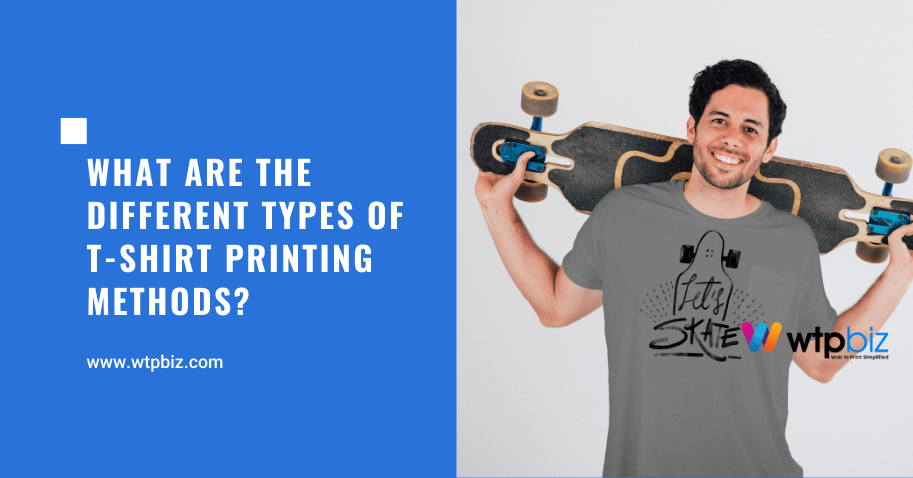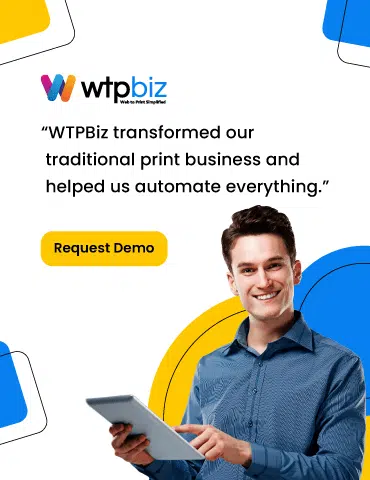What are the Different Types of T-Shirt Printing Methods?
Have you ever wondered how a certain procedure of t-shirt printing is carried out, or the main reasons behind selecting a specific print process for certain designs? If you are looking forward to getting answers to your queries, then this particular guide will prove to be very helpful for you.
Different types of t-shirt printing methods
Let’s have a close look at the different types of t-shirt printing methods that are available in the market. This will help you to understand how to print a picture on a shirt.
Screen Print With Under Base
It is known to be the preferred printing process for a variety of reasons. It is cost-effective and, in many situations, will make the apparel product long-lasting. Also, this particular method is greatly beneficial for printing a single spot as well as simple color design on a bulk quality of the t-shirts.
The best part about screen printing is that it works effectively on every sort of apparel material which includes cotton as well as poly blends. Although the color, in this case, is more vibrant than other print processes, it might make the cloth feel hefty.
Adding up a white under base specifically to the design tends to increase the layers of ink. But, it is also proven to be very helpful for maintaining the intensity of the colors.
Simulated Process
It is regarded as a high-end printing procedure that is found to be very effective for intricate designs. Another thing that you should keep in mind is that you would not be able to reproduce it by making use of conventional spot color ink applications.
Halftones or other sorts of tonal designs, such as photography-like images, can usually be produced by making use of this printing procedure i.e., simulated process printing.
Four Color Printing
It is known to be the oldest method of embellishing garments. In this case, a similar technique is used as an inkjet printer. But, here, blending of the four process colors of Yellow, Magenta, Cyan, as well as Black, occurs which makes it different from the other procedures existing in the industry.
It helps to effectively produce the complete spectrum of colors. So, this process of printing performs effectively on light or white-colored clothes.
Halftone Photo Print
It is an effective method in which you can easily simulate gradients as well as shadows. The best part is that you would be able to do this without increasing cost just by making use of a single color. In this case, you do not have to make use of several colors. Halftones are composed of very small dots.
If the color appears to be more saturated, then, in that case, the dots are much bigger. Dots, that are smaller in size are utilized for lighter design areas. These particular dots tend to blur all together whenever you see this from a short distance. So, it will effectively create the illusion of depth, tones as well as a shadow for emulating imagery that is of photography quality.
Discharge Water Base Print
Among the different printing styles, discharge water base printing is a particular method of printing which a lot of people currently are involved in choosing specifically due to the print’s soft feel.
Unlike plastisol inks, which lie on the upper portion of the fabric, this technique cut off the dye color of the t-shirt, revealing either the actual color of the cloth used to produce the apparel or, replacing the garment color whenever blended with another color.
Digital Printing
By making it cost-effective to print a particular t-shirt or other garments for a consumer, this form of printing has effectively revolutionized the overall apparel printing sector. Despite the application of ink all through the usage of screens particularly on a press, in this case, the transfer of the picture occurs similarly to a home printer i.e., the ink is being directly infused into the cloth.
A home printer is a type of printer that prints on shirts. Finally, it is cured by making use of a heat press. So, it is considered to be an extremely effective as well as economical option to choose whenever you are seeking full-color photographic reproduction on garments.
Full-Color Digital Transfers
It is considered to be a great option for full-color image reproduction which can be easily put into every sort of fabric. This includes performance wear, nylon as well as spandex.
Sometimes, it is used for replacing the embroidery method, in case the image possesses multiple numbers of fine detail. The pictures are properly held onto the garment with the use of pressure as well as heat.
Glow-In-The-Dark Printing
This is another popular technique for specialty low light graphic effects on cloths for glow runs or other nighttime occasions. It is very important to expose glow-in-the-dark inks to a specific source of light for charging purposes. The glow effect will intensify as well as last longer if exposed to light for longer periods.
High Gloss Clear Ink
It’s perfect for delicate tone-on-tone impacts, especially on black clothes, or as a “topcoat” over spot colors, which contributes to providing it a high-gloss finish.
Glitter Transfers
This particular method for clothing tends to have a very big impact on any particular design which requires luster and dazzle.
As the design is shaped out of a sturdy sheet of glitter material that needs the surplus to be scraped off, glitter should never be utilized for designs that demand a great deal of fine detail. In this case, you will see that the color options are restricted to what is offered by the manufacturer.
Metallic Ink Prints
This process helps in creating a striking look for personalized designs on t-shirts as well as other garments. For a diverse variety of looks, you should focus on choosing between regular and shimmer metallic.
Crystalina Prints
It is frequently added as a subsequent coat on the upper portion of usual plastisol ink colors. It, in turn, helps to provide a glittering shine as well as texture to the design. As the topcoat diffuses the ink’s color, a brilliant red will seem subdued.
Puffy Prints
Any creative custom design on clothes can get a retro puffed-up look with the help of puffy printing. So, in this case, whenever heat is applied to the ink, an additive that is combined with the ink gets stimulated.
Sugar Printing
Application of a wet adhesive to a clothing item and after that, pressing the wet print particularly into a sugar glitter bed helps in creating the sugar print effects. As the sugar glitter, in this case, is on top of the design work, and this is the main reason, why you should always adopt special care at the time of washing. Otherwise, you will fail to achieve good results.
Resist Dyeing
Resist dyeing is regarded as a conventional t-shirt printing procedure that is getting very popular these days. This is one of the most utilized DIY t-shirt printing techniques since in this case, you do not require a lot of machinery as well as setup.
Using the Tie and Dye and Applied-Resist process, often known as Batik, you would be able to print complicated designs along with colors on the cloth.
Pinch particular areas of the t-shirt as well as tie them into a thread if you’re making use of the tie-dye resist method, so that lovely patterns will appear when the dyeing is completed.
By repeating the process one color at a time, you can try making use of various colors to improve the design. Again, as for batik, consider applying paste or wax to the portions of the batik that you don’t want to be colored during the dyeing process.
Whenever you resist-dye your t-shirt, you’ll never run out of options since each dye produces a unique design. Consider switching the parts that are covered or tied with wax to create designs each time.
As this process is more pattern-specific, you won’t be able to get a particular image or design whenever you print your t-shirts using this method.
Digital Transfers Process
Digital full-color transfer is a straightforward process. On your computer, just focus on selecting a design and then transfer it on a thin vinyl transfer paper. For a more refined aesthetic, cut off the pattern, such as the inner parts of the alphabets. The subsequent step is to place the design on the cloth as well as fix it in place using a heat press.
In this case, as the inks include CMYK toner as well as extended color gamut inks, and so, with digital full-color transfer printing, you have an infinite range of colors. This procedure can be used on a wide variety of fabrics, including nylon, cotton as well as polyester.
Due to the wide variety of inks used by a digital printer, single-color designs fail to provide you with top-notch outcomes.
Lasers Transfers
Laser transfers are the best option for anybody who wants to accurately portray every color in a single printed image. To transfer the design as well as images onto the fabric, this method necessitates the use of high-quality laser printers.
To get the precise resolution of the picture reflected on your computer screen, you should focus on utilizing a heat press, laser printer, and heat transfer papers. Consider choosing a picture or design and customize it according to your needs.
Finally, send the file to the laser printer, where it will transfer the media especially onto the transfer sheet. In this regard, you can make use of the heat to imprint the image on the fabric.
As laser printers employ a CMYK color printing technology, and this is the main reason why laser transfers are ideal for printing digital images on t-shirts. If your laser printer possesses a white toner, you can obtain comparable results on t-shirts that are of darker color.
The fact that this procedure involves heating is a big disadvantage. You can’t print on a t-shirt that can’t endure extreme heat.
Vinyl Heat Transfers
Vinyl transfers are considered to be another technology that is becoming more popular because of the superior quality of finishing it provides. This method is similar to heat transfer printing in that it uses heat as well as pressure for imprinting the design onto the fabric.
You can also utilize it as one of the best screen printing examples or options which help to provide you with improved multi-color design outcomes.
If you’re wondering how to print anything on a t-shirt by making use of these vinyl heat transfers, the process is pretty simple and easy. You’ll need a heat press, heat-resisting sheets, printer, computer, inks, vinyl cutter, as well as vinyl transfer paper, among other things.
On your computer, consider choosing a graphic image and then, print it onto the vinyl heat transfer paper. The next step involves heating the heat press as well as adjusting the pressure based on the thickness of the fabric. Finally, place your t-shirt face-up on the heat press plate, as well as press it shut. Consider removing the vinyl sheet after that.
As the design is merged within the fabric through heat, the vinyl heat transfers assure longevity. No matter how many times you wash it, the colors linger longer. The disadvantage of this procedure is that it is time-consuming due to the many steps that must be followed.
Plastisol Transfers
Heat press, as well as transfer sheets, are required for carrying out this particular process. Plastisol heat transfers are a popular choice for t-shirt printing since it tends to provide excellent results with a very soft feel. Indirect screen printing is another name for this kind of printing.
It is often used by professionals and employs high-quality heat transfer paper on which your design is screen printed for transferring of the design. In this case, hot split transfers are used for creating a soft matty finish. Cold peel transfers tend to provide a glossy finish.
The main benefit of this method is that it allows you to print one-off orders at a low cost. The end product is similar to a high-quality screen-printed design. In comparison to screen printing, the time needed is also significantly reduced. This method is currently used by a lot of t-shirt companies.
The disadvantage of this method is that it requires decent heat press equipment. If you want to establish a t-shirt company, that is an investment that you can make.
Conclusion
Even with the advent of technologically advanced printing technologies, several classic t-shirt printing methods are still in use. This is because each approach caters to a particular set of requirements. Some are exceptionally durable in terms of color quality, while others are considered affordable and easy for bulk orders.
Make a list of your needs as well as your budget before deciding which t-shirt printing processes are best for you.
Do you want to try something different from typical screen printing or digital printing? So, irrespective of your requirements, you should consider opting for the assistance of a web to print service provider who will be able to satisfy your unique needs.
An online t-shirt shop can help you a lot as they make use of a proper t-shirt design tool as well as a t-shirt printing machine for printing effectively on a blank t-shirt. Also, in this case, you need to procure your t-shirts from a blank t-shirt supplier who offers reasonable pricing.







